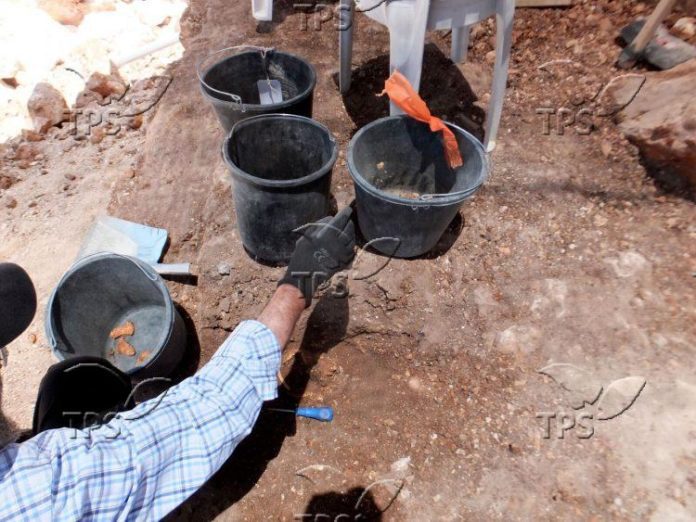2,000-Year-Old Decapitated Skeletons Found in Downtown Jerusalem Dig
The skeletons lay in a chaotic fashion. They had once belonged to mothers, wives, children and in some cases were even unborn fetuses. There were very few men among them.
They were slaughtered in a violent swoop, gathered up and thrown into a massive cistern, and left to be undiscovered for over 2,000 years.
On Sunday, the Israel Antiquities Authority announced that the remains of 125 decapitated skeletons, were found at archaeological dig in in Jerusalem’s Russian Compound.
The skeletons, mostly found to be women and children, were from the Pharisee community, an ancient sect of Jews who were well known for opposing the Hasmonean King Alexander Yannai in the first century BCE.
Based on the coins and pottery found at the site, it believed that the massacre took place during the period in which Yannai ruled over the ancient kingdom of Judea, between 103 and 76 BCE.
According to the Israel Antiquities Authority, the skeletons were discovered in an ancient water cistern, which was found during a recent salvage excavation, close to the Jerusalem Municipality offices.
IAA archaeologists Kfir Arbiv and Tehila Lieberman, along with authority anthropologist Dr. Yossi Nagar, found three layers in the large cistern.
The earliest layer, from the first and second centuries BCE – dated according to the ceramic shards and coins found at the site– contained the remains of at least 125 individuals, including men but also mostly women, children and infants, among which that three tiny skeletons were found there.
“We discovered an alarming finding,” said Nagar, “We removed more than twenty cervical vertebrae… [and] bodies and body parts of babies and adults, women and men, who were apparently the victims of a cruel massacre, were thrown into the pit.”
“It’s presumed to be fetuses from the wombs of murdered women,” the archaeologists said. “A large number of the skeletons had marks showing that neck vertebrae and skulls had been cut or severed. There were no other injuries found on the skeletons hands or feet, following extensive examinations.”
It was also evident that the cuts on the neck and vertebrae and skulls had never healed, which the IAA established must have been cause of death – evidently decapitation.
Due to their being no other wounds, on the bodies, the IAA said it can be assumed they were killed execution style and did not fall in battle.
The skeletons were found lying, and not in the usual burial position, so the researchers assumed the bodies had been thrown in after the execution.
Yannai’s reign was marred with numerous wars, and notably violent internal clashes between the Pharisees and the Sadducees – both ancient Jewish sects that had deeply conflicting views of Judaism, its laws, the laws of purity and the afterlife.
Yannai was a staunch supporter of the Sadducees. During the Feast of Tabernacles holiday, the king, while officiating as the High Priest at the Temple in Jerusalem, demonstrated his support of the Sadducees by refusing to perform the water libation ceremony properly: instead of pouring it on the altar, he poured it on his feet. The crowd responded with shock at his mockery and showed their displeasure by pelting Alexander with the etrogim (citrons) that they were holding in their hands. Outraged, he ordered soldiers to kill those who insulted him, more than 6,000 people in the Temple courtyard were massacred.






